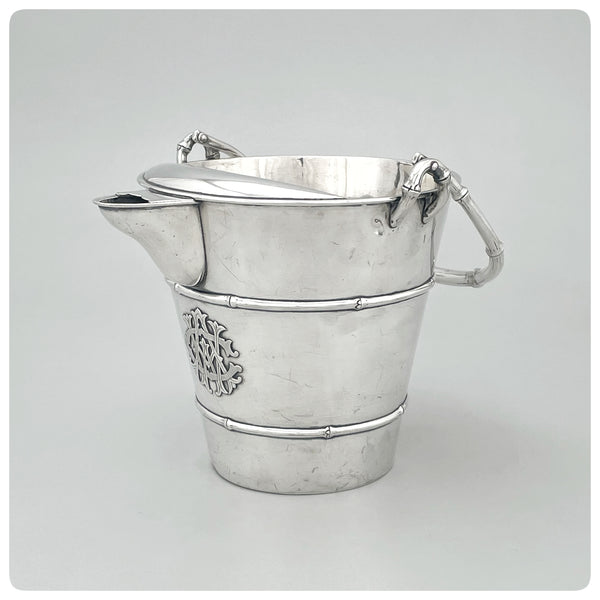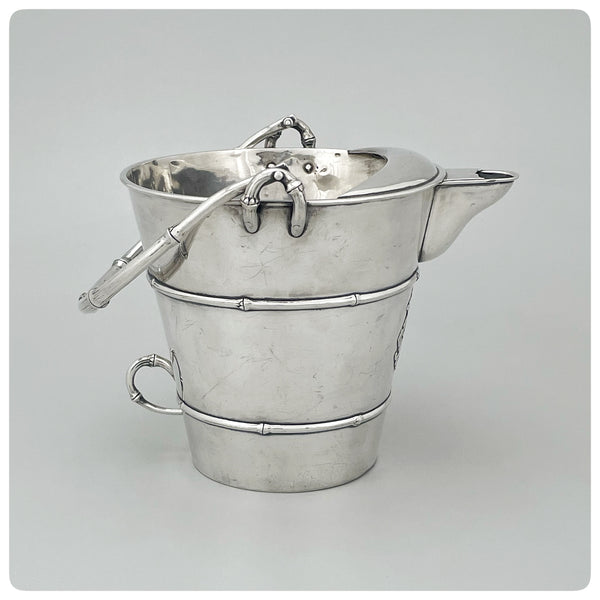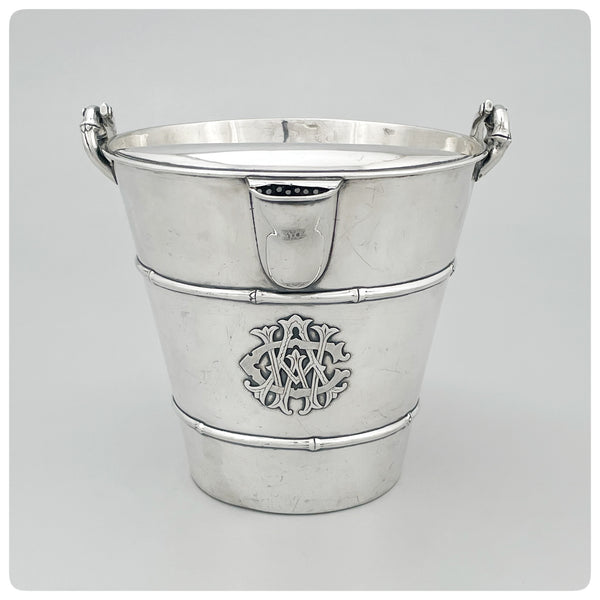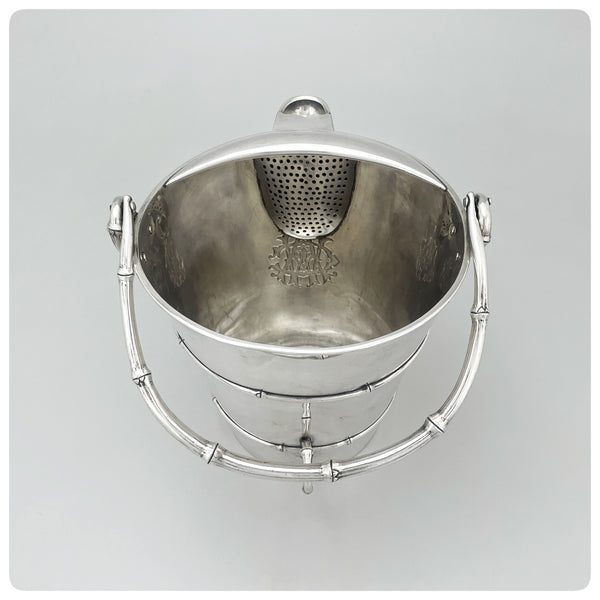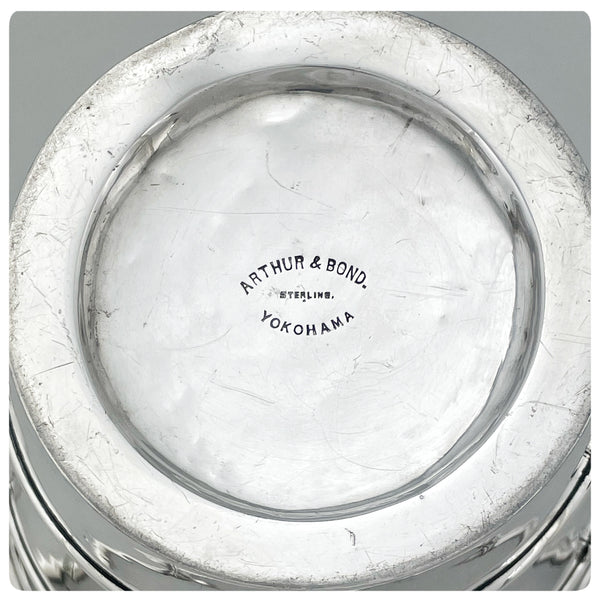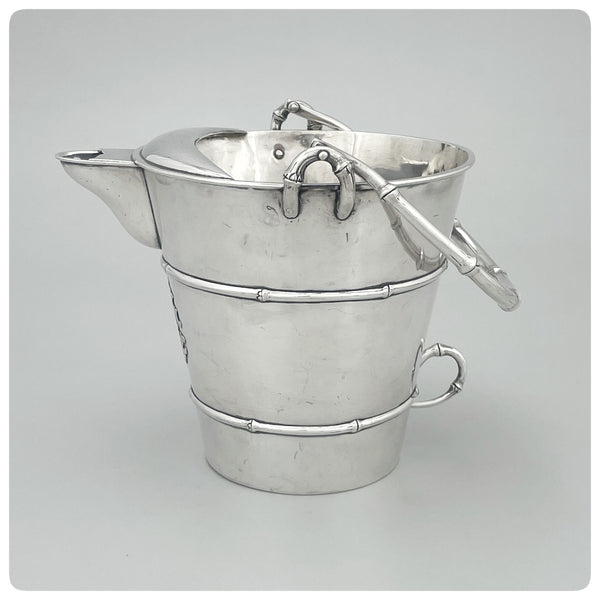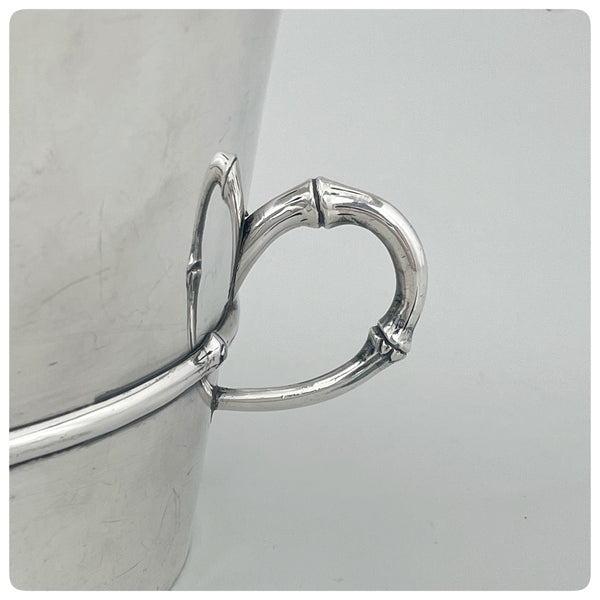Japanese Sterling Silver Cocktail or Water Pitcher / Ice Bucket / Wine Cooler in the Shape of a Bucket, Arthur and Bond, Yokohama, Circa 1900
After centuries of socioeconomic isolation, Japan reopened to international trade following a relentless campaign by aggressive Western countries at the end of the Meiji period (1868-1912). The old Tokugawa shogunate strictly prohibited silver and gold trade. The newly opened markets, however, birthed the "Yokohama gold rush", as people flocked to this fresh commercial center.
English-owned retailer/manufacturer Arthur and Bond dominated this demand for silver by catering to the tourists and expatriates. They established their flagship store in Yokohama and opened branches in Kobe, Japan, London and New York. The dragon-clad, sterling silver Liscum Bowl was commissioned for the United States 9th Infantry Regiment in 1902. It measures 1' 9" high, 3'3" wide and 95 pounds, and hails as Arthur and Bond's masterpiece commission.
This pitcher's elegance is second only to its versatility. It could be a cocktail pitcher, water pitcher, ice bucket, wine cooler, and vase. It bears delicate repousse initials, indicating ownership by someone of means. It also features a small loop-shaped handle at the bottom of the pitcher to facilitate a steady pour. The silver bamboo branches harken back to its creator's homeland, and serve as a reminder of a distinguished era's end and the beginning of new frontiers.
Condition
Part of our carefully curated estate collection, this vintage silver piece carries a unique character and storied patina that only time can create. We hope you treasure the authentic and distinctive attributes that make this a truly one-of-a-kind find.
Measurements
11 1/2"height to the top of the handle, 7" length, 7 1/2" width. 19.24 troy ounces.







